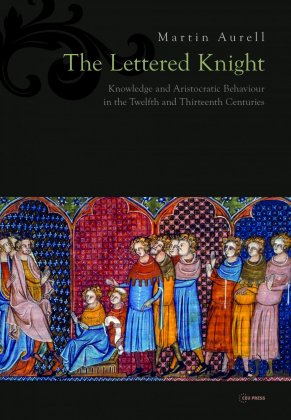
The Lettered Knight
The Lettered Knight
Knowledge and Aristocratic Behaviour in the Twelfth and Thirteenth Centuries
« An encounter between a warring knight and the world of learning could seem a paradox. It is nonetheless related with the Twelfth-Century Renaissance, an essential intellectual movement for western history. Knights not only fought in battles, but also moved in sophisticated courts. Knights were interested in Latin classics, and reading and writing poetry. Supportive of “jongleurs” and minstrels, they enjoyed literary conversations with clerics who would attempt to reform their behaviour, which was often brutal. These lettered warriors, while improving their culture, learned to repress their own violence and were initiated to courtesy: selective language, measured gestures, elegance in dress, and manners at the table. Their association with women, who were often learned, became more gallant. A revolution of thought occurred among lay elites who, in contact with clergy, began to use their weapons for common welfare. This new conduct was a tangible sign of Medievalist society’s leap forward towards modernity.
This monograph contains a great deal of detailed information about the attitudes towards learning and written culture among members of the nobility in different parts of Europe in the Middle Ages. »
[présentation de l'éditeur]
Traduction de : Le Chevalier lettré. Savoir et conduite aristocratique aux XIIe et XIIIe siècles
« An encounter between a warring knight and the world of learning could seem a paradox. It is nonetheless related with the Twelfth-Century Renaissance, an essential intellectual movement for western history. Knights not only fought in battles, but also moved in sophisticated courts. Knights were interested in Latin classics, and reading and writing poetry. Supportive of “jongleurs” and minstrels, they enjoyed literary conversations with clerics who would attempt to reform their behaviour, which was often brutal. These lettered warriors, while improving their culture, learned to repress their own violence and were initiated to courtesy: selective language, measured gestures, elegance in dress, and manners at the table. Their association with women, who were often learned, became more gallant. A revolution of thought occurred among lay elites who, in contact with clergy, began to use their weapons for common welfare. This new conduct was a tangible sign of Medievalist society’s leap forward towards modernity.
This monograph contains a great deal of detailed information about the attitudes towards learning and written culture among members of the nobility in different parts of Europe in the Middle Ages. »
[présentation de l'éditeur]
Traduction de : Le Chevalier lettré. Savoir et conduite aristocratique aux XIIe et XIIIe siècles
